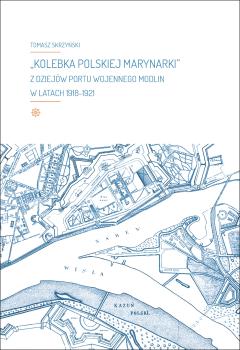„Kolebka Polskiej Marynarki” : z dziejów Portu Wojennego Modlin w latach 1918-1921
Słowa kluczowe:
The Vistula Flotilla, The “Modlin” Military Port, The Polish NavyStreszczenie
„THE CRADLE OF POLISH NAVAL FORCES” MODLIN MILITARY PORT IN THE YEARS 1918-1921
From December 1918 to April 1920, the headquarters of the Vistula Flotilla and more generally the Naval Forces were based at the Modlin Military Port. The Flotilla was established as a result of efforts to regain Poland’s access to the sea. The location was chosen due to, for example, a real threat to the existence of the state coming from the north-west, a small distance from the capital, and earlier Russian and German investments. Decisions of empires to create the Free City of Danzig had a serious influence on the history of the Modlin Military Port.
The area covered by the Modlin Military Port during the period 1918-1921 was subject to changes. The territory managed by the Port Commander was diversified in terms of buildings, topography or even the ethnic groups of civilians living nearby. In 1919 the Commander supervised, among other things, the School for Naval Specialists in Kazuń (on the opposite bank of the Vistula River), the Modlin railway station and a huge granary. At the same time, a harbour “for loading coal in the Narew River” functioned within the Military Port (or in a small distance therefrom).
After April 1920, the area of the port was reduced. According to the data for 1921 and 1922, the Port covered the following areas: shipyard, winter port, motorboat harbour, adjacent capes, harbour next to barracks, area of the following streets: Portowa, Jana z Kolna, Admirała Sierpnika and Kapitana F. Dunin-Wąsowicza (up to the corner of aleja Marynarzy and Kaszubska Street), aleja Marynarzy; area of the Armoury; area around the Central Technical Depots; area between the Kazuń road, Kaszubska Street and aleja Marynarzy; area between the Kazuń road, the railway track and aleja Marynarzy; the areas in the triangle between the navy garrison – Kaszubska Street and the Vistula River, and the Vistula River harbour with neighbouring areas.
The Port had difficult beginnings. Depots and barracks were in a very bad condition. There were poor supplies and poor sanitary conditions, difficulties in relations between Port managers and the commanders of the Modlin Fortress, and problems paying soldier’s pay. The definite majority of Polish marines soon left the Naval Forces. This was the reason why the Modlin Military Port played an important role in training the coming marine volunteers for service in sea and river vessels.
Rozdziały
-
TABLE OF CONTENTS
-
Wstęp .......... 11
-
I. FLOTYLLE WIŚLANE (LISTOPAD 1918 – GRUDZIEŃ 1921) .......... 27
-
II. PORTY FLOTYLLI WIŚLANEJ W LATACH 1919-1921 .......... 39
-
III. W ROLI GŁÓWNEJ BAZY MARYNARKI WOJENNEJ (GRUDZIEŃ 1918 – KWIECIEŃ 1920) .......... 55
-
III.1. Trudne początki .......... 57
-
III.2. Komenda Portu Wojennego i Kancelaria Ewidencyjna .......... 72
-
III.3. Warsztaty .......... 80
-
III.4. Jednostki pływające .......... 85
-
III.5. Oddział Szkolny i Szkoła Specjalistów Morskich .......... 89
-
III.6. Batalion Morski, Kompania Portowa i Oddział Zapasowy Marynarzy .......... 94
-
III.7. Magazyny .......... 100
-
III.8. Inne struktury podległe komendantowi Portu Wojennego .......... 103
-
III.9. Port Wojenny jako baza dla działań na froncie wojny polsko-bolszewickiej .......... 104
-
III.10. Wyzwania kadrowe i zagadnienia społeczne .......... 109
-
IV. W OBLICZU MILITARNYCH I ORGANIZACYJNYCH PRZEMIAN (MAJ 1920 – GRUDZIEŃ 1921) .......... 129
-
IV.1. Władze Portu Wojennego .......... 131
-
IV.2. Warsztaty .......... 135
-
IV.3. Jednostki pływające .......... 146
-
IV.4. Magazyny.......... 149
-
IV.5. Szkoła Specjalistów Morskich i Oddział Szkolny .......... 150
-
IV.6. Inne struktury podległe Komendzie (Dowództwu) Portu Wojennego .......... 155
-
IV.7. Rola Portu Wojennego w transporcie materiałów wojennych .......... 158
-
IV.8. W roli bazy dla działań na froncie wojny polsko-bolszewickiej .......... 163
-
IV.9. Wokół rozbudowy Portu Wojennego .......... 168
-
IV.10. Wyzwania kadrowe i kwestie społeczne .......... 180
-
Zakończenie .......... 197
Downloads
Bibliografia





